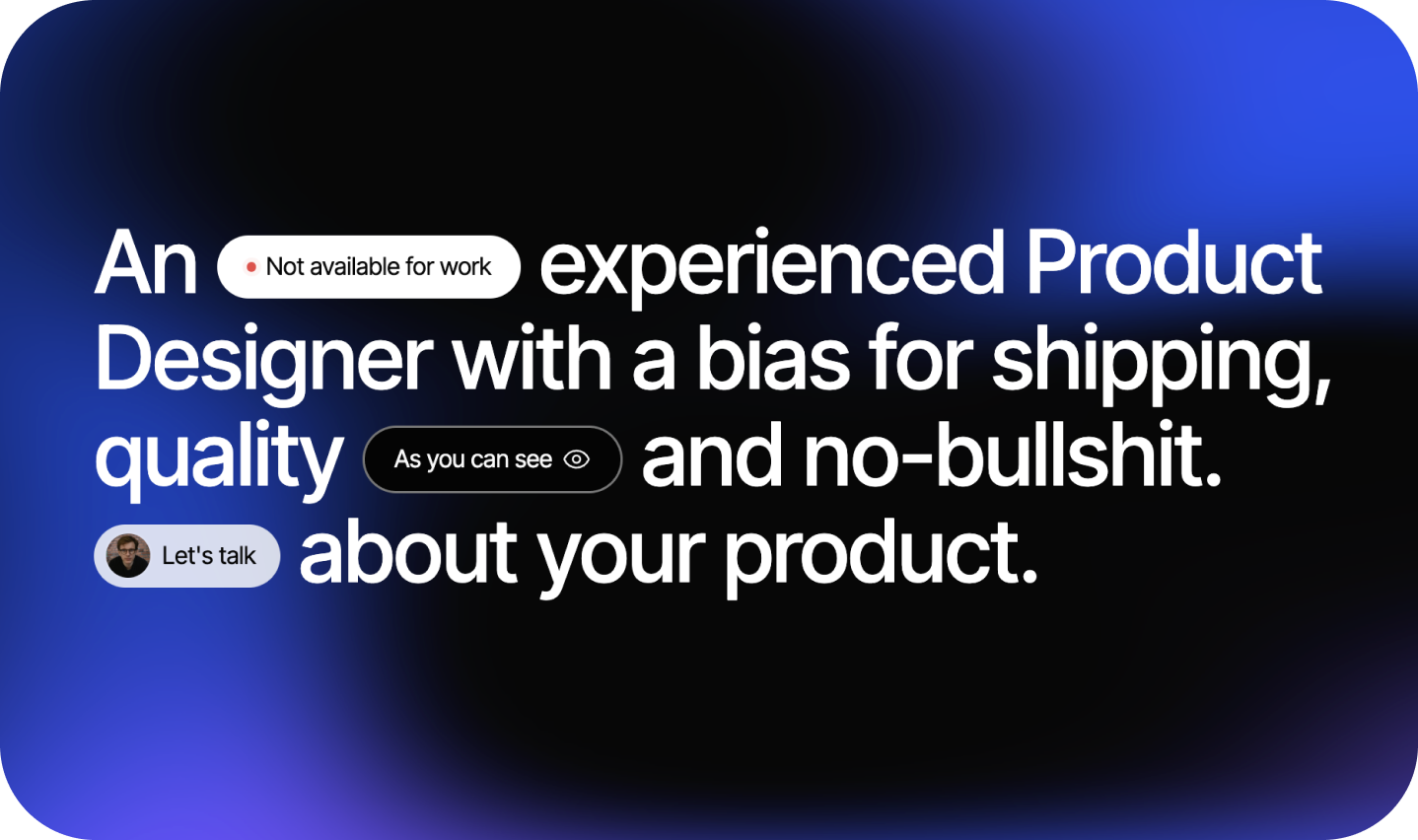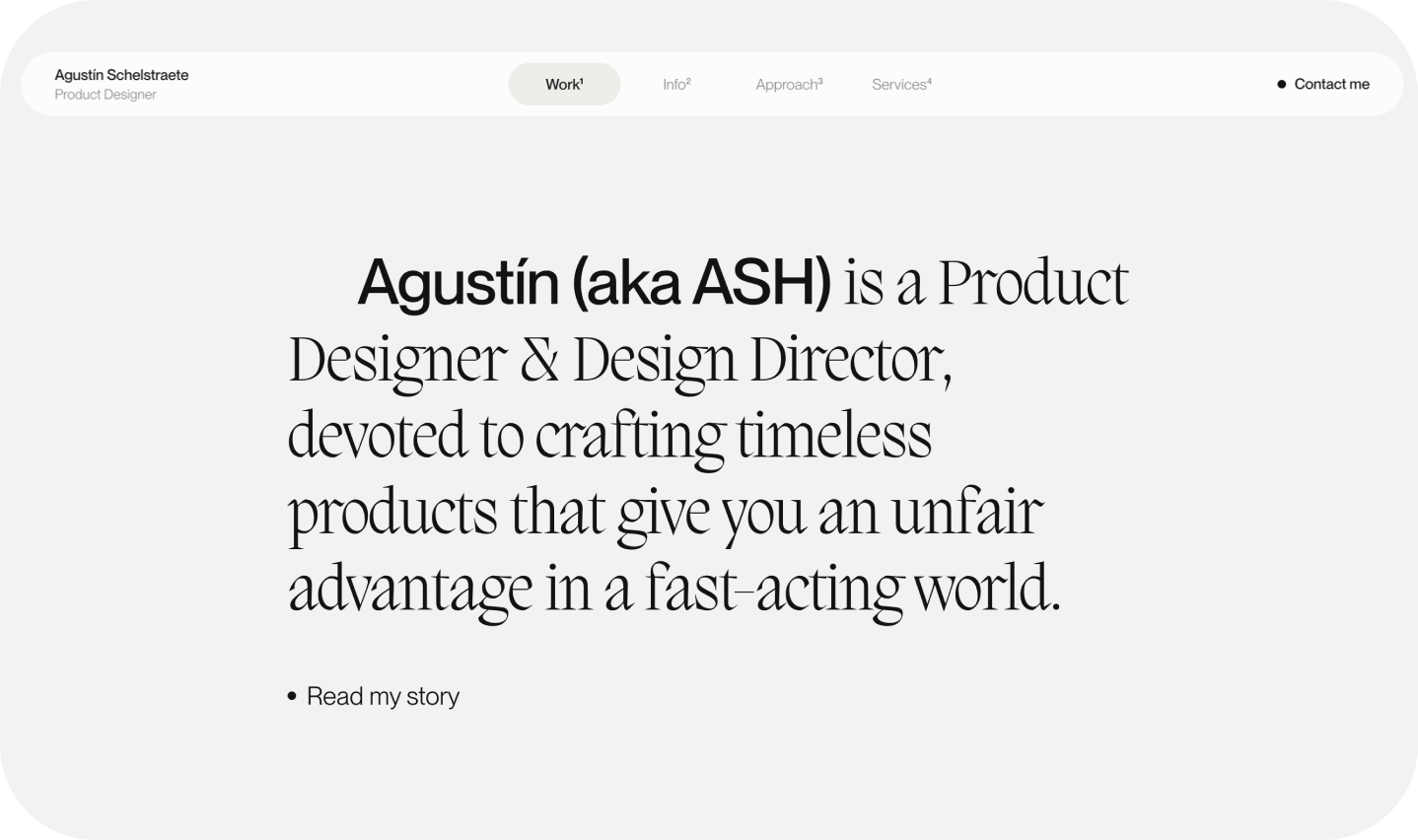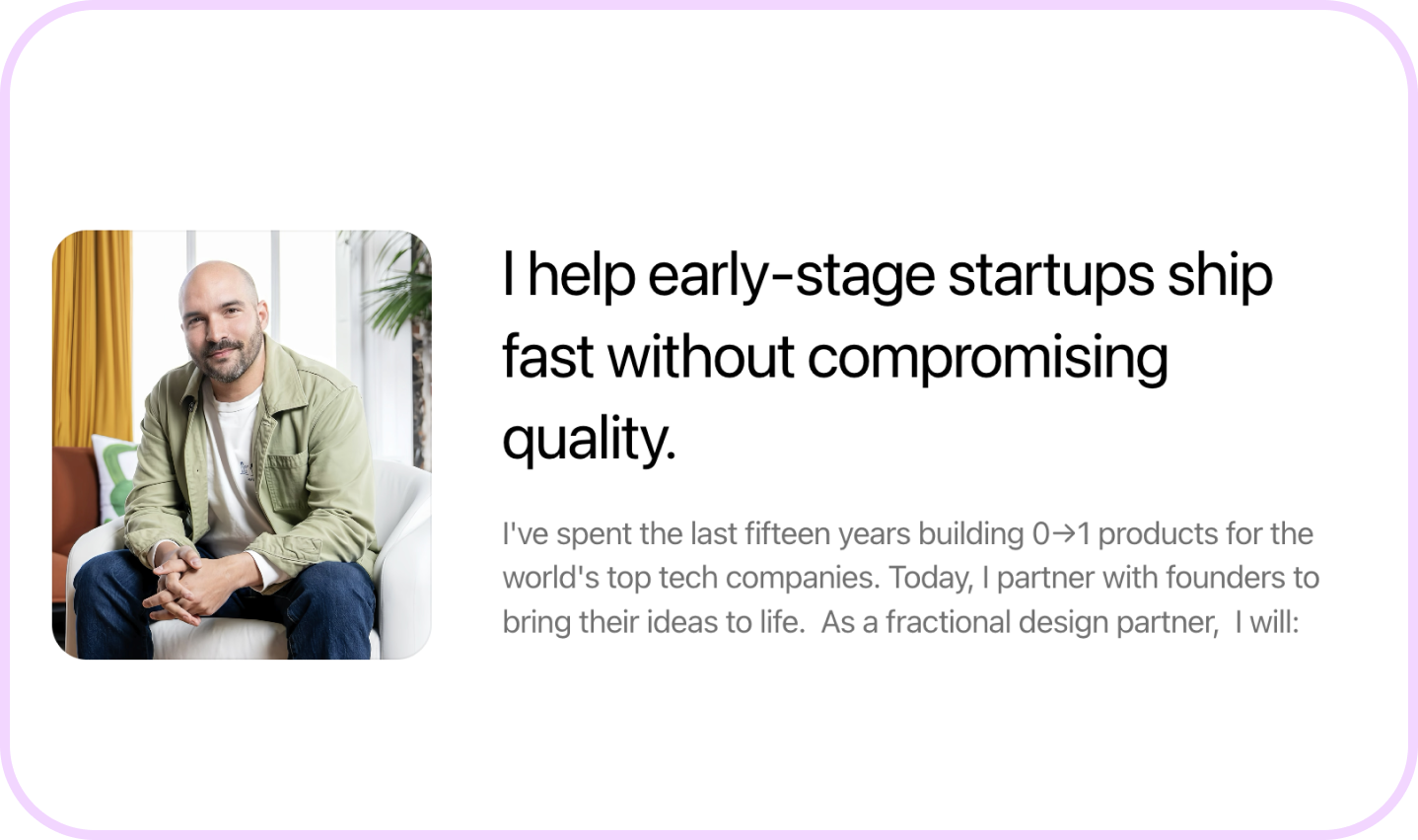Hey, UX friends! Happy Tuesday.
If we haven't met yet, my name is Anfisa—senior product designer at MEWS by day. By night, I help UXers to stand out in a crowded market inside the IntoUX Community.
First impression doesn’t start with a case study.
It starts with your one-line intro.
So let’s be real: in a market where jobs are scarce and designers are everywhere, standing out isn’t optional, it’s essential.
And that starts by ditching intros like:
“I craft user-centered experiences.”
(because, who doesn’t?)
Learn what makes a great intro:
Take the “One-line intro” challenge
Step into the hiring manager’s shoes and evaluate 15 real portfolio intros.
It’s fast, fun, and surprisingly eye-opening, after which you might end up rethinking your own intro.
⚠️ *Only from the desktop.
But what's the one-line intro?
It's that little sentence at the top of your portfolio that we all kind of rush through. But here’s the thing → it matters a lot.
It’s the first thing a hiring manager reads
And it either makes them hooked… or want to move on.
Either makes you stand out, or get lost in the crowd.
Think of a one-liner as a pin that needs to connect the rest of the portfolio. If it feels flat or too general, the rest of your portfolio has to work way harder. But if it clicks, you’ve got their attention.
Your portfolio is a funnel
An intro goal is simple:
To get the hiring manager curious enough to want to talk to you.
And to do that:
- Start with what you’re great at (intro)
- Then hint at what you’ve done (case study projects)
- Then show a bit of how you did it (case study content).
Here are a few ideas on how to write it:
1️⃣ Abstract your past background experience ✨
Don’t just name the industry you've worked in → zoom out.
Look at the kinds of problems you’ve repeatedly solved.
E.g.: Worked in fintech?
You’ve likely dealt with complex systems, strict regulations, limited user access, or data sensitivity. That’s not just “experience” → that’s a strength. You’ve built resilience in ambiguous, high-stakes environments.
A punchier bio might say:
"I design for highly regulated markets."
2️⃣ Use your quirks 🧠
Every designer thinks differently → and that’s gold. Your personal “thinking patterns” are often what make your work stand out.
E.g.: I tend to overthink.
It’s a quirk that used to feel like a flaw → until I realized it helps me think systemically and reduce long-term design risks. Suddenly, it becomes a strength in the right team.
3️⃣ And more great examples by designers:
Ready to take a challenge?
⚠️ *Only from the desktop.
Want to tell your design management story with confidence?
Join Powerful Portfolios for Designers in Management: a 3-day live workshop for design managers. You’ll learn how to turn your complex experience into a clear working portoflio.
Taught by Ryan Rumsey, Design leader from Apple, EA, and Nestle.
🎯 You’re getting:
- A story-first method that highlights your leadership and results.
- Multiple ways to frame your portfolio depending on your goals.
- Personalized feedback from Ryan, a design exec who’s hired hundreds of designers.
- Peer practice with experienced managers.
📆 This is a 3-day workshop:
- Tuesday, August 12, 1-4p ET (zoom)
- Wednesday, August 13, independent work
- Thursday, August 14, 1-4p ET (zoom)
👋 Who it’s for:
Design managers with 5+ years of experience are ready to step up their portfolio game.
🏷️ Use 20% off coupon INT0UXAN7 at checkout.
That’s all for now.
Hope this sparked some ideas, and maybe even nudged you to revisit your one-liner.
Stay inspired,
Anfisa
🫶




